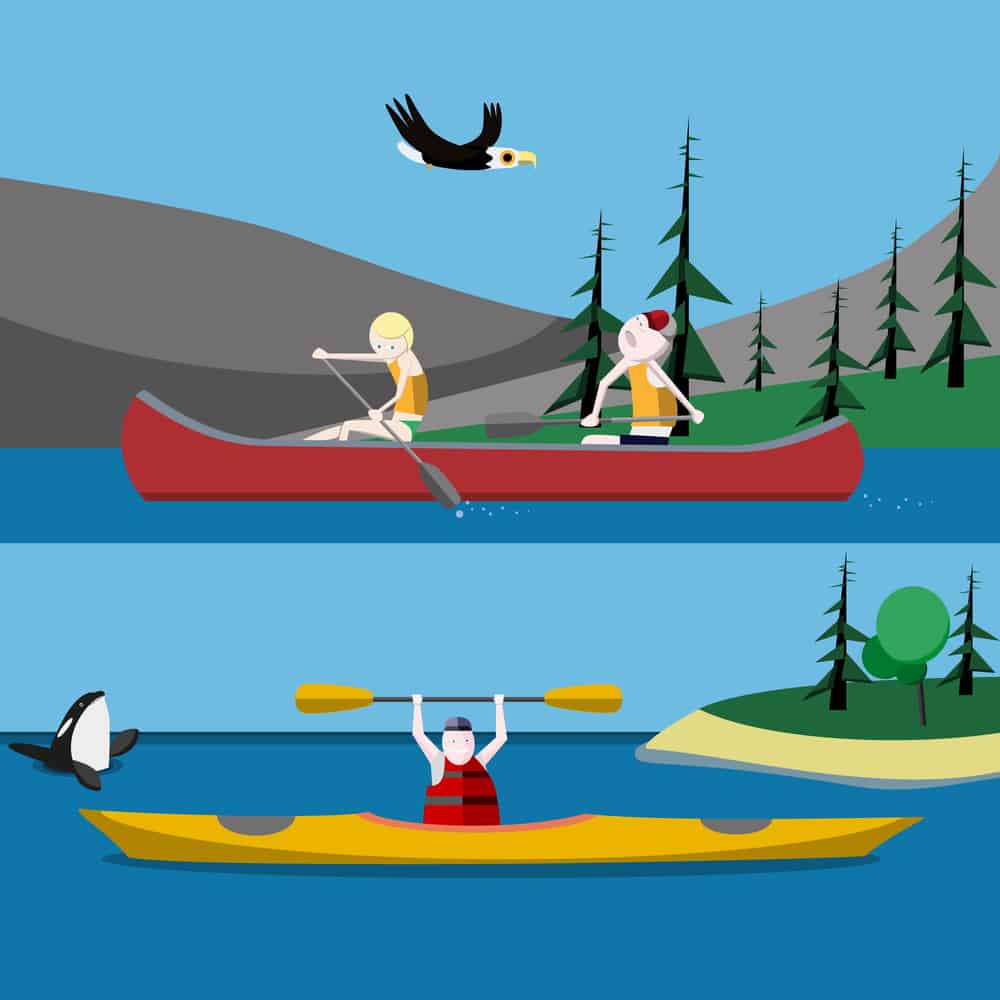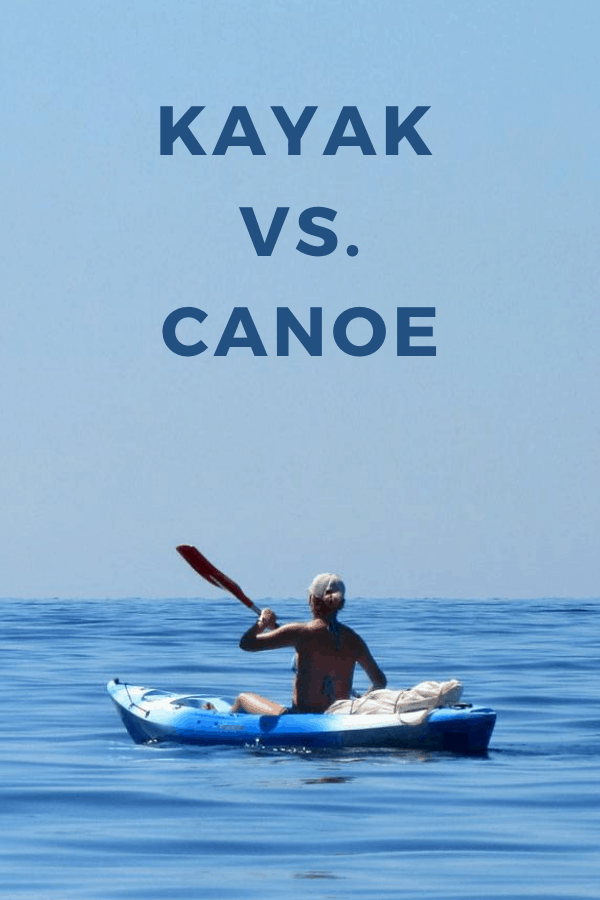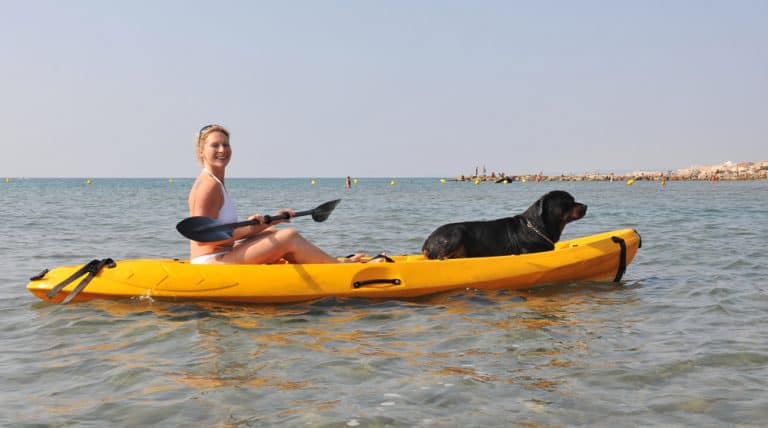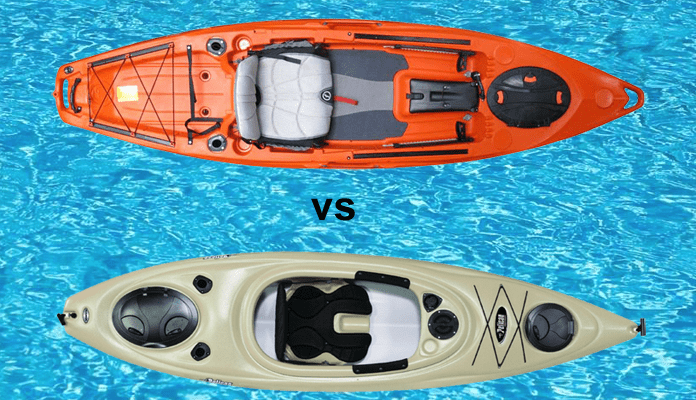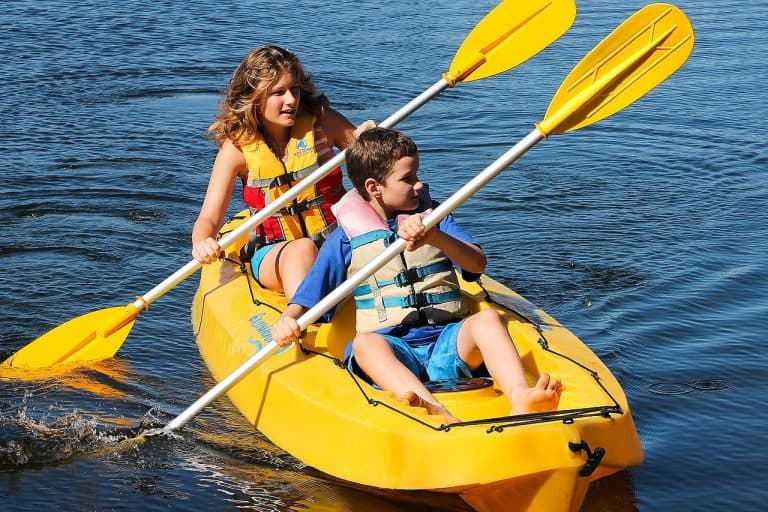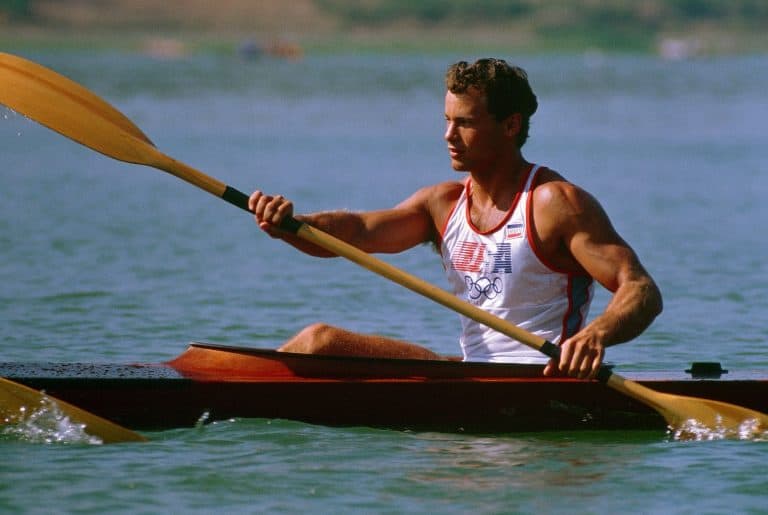When it comes to paddlesports, there are a lot of options.
But two of the most widely used and popular forms of watercraft are canoes and kayaks. If you’re not much of a paddler, you might think, “Aren’t they the same thing?” While they do share a lot of similarities, the two types of boats are actually very different.
In addition to their different styles and shapes, they are often used for different purposes.
Choosing which one is right for you can be difficult, so we’ve broken down the good and the bad of each to help you decide. Kayaks versus canoes – we’ll let you decide who wins!
Also Read: Tandem Kayak vs Canoe
Kayaks
Let’s take a look at kayaks first. Originally used by the Inuit tribes of Arctic North America, kayaks have been around for hundreds of years. The first kayaks were made from either driftwood or whalebones covered with animal hides.
Though they still hold the same basic shape and design, kayaks these days are made from vastly different materials.
The majority of kayaks nowadays are made from polyethylene, or plastic. There are also fiberglass versions, composite materials like kevlar, and even wooden kayaks. Their design has improved over the years to become sleeker, faster, and more durable.
In addition to the variety of materials used in making kayaks, there is also a wide range of styles and types of boats.
There are two main types of kayaks: covered (sit-in) kayaks and sit-on-top kayaks. In a covered kayak, you have a bottom hull and a top deck with a cockpit in the center for you to sit inside.
The area around your torso is somewhat open but your legs will usually be covered. These types of kayaks are great if you don’t want to get too wet. You can cover the cockpit with a spray skirt to keep almost all water from getting inside.
Sit-on-tops are pretty much as straightforward as they sound. You sit on top of a single piece of plastic that resembles half of a covered kayak.
These are great for beginners, as you don’t have to worry about getting stuck in your boat, capsizing, or having to deal with taking on water.
They’re also perfect for hot days when getting wet is something you’d actually want. If you capsize or fall off of a sit-on-top kayak, you can just flip it over and hop back on. They’re ideal for beginners or short paddles in the sun.
What are Kayaks Used for?
Kayaks have certain advantages over canoes. Because of their compact shape and ability to be covered, they’re ideal for use on open water and rough conditions, like ocean surf or rivers.
Whitewater kayaks are short and easy to maneuver in river rapids, while sea kayaks are long and narrow and perfect for paddling in ocean surf or on long trips.
Kayaks are super versatile. You can fish from bigger recreational kayaks, play in rapids in smaller whitewater boats, and keep your belongings and supplies dry on long trips in sea kayaks.
Whether you’re a professional looking to race and compete, or you just want a boat to float around on your local lake, having a kayak means you’ll be able to paddle in a wide range of conditions.
Why Choose a Kayak?
There are a lot of benefits to having a kayak over a canoe. I could talk about the ins and outs of each for hours, but for now, let’s stick to the basics. Here are some of the top benefits of having a kayak:
- Smaller and easier to carry (especially by yourself!)
- Can be easily paddled with one person
- Perfect for rapids and rough water
- Storage hatches to keep your belongings dry
- Comfortable to sit for a long period of time
- Easier to manoeuvre
- Requires less effort to paddle with a double-bladed paddle
There are some disadvantages, too, of course. Plastic kayaks can be very affordable, but sea kayaks and composite materials can cost thousands of dollars, making them a very big investment.
There’s not as much space in a kayak than in a canoe, and some people find it hard to master the paddle movements. Kayaks also limit the number of people you can have in your boat.
Canoes
If you thought kayaks had been around for a long time, you’ll be amazed at the history of the canoe. While it’s hard to say for sure when the first canoes were built, we do know that they have been around for thousands of years.
The earliest styles of canoe were made from hollowed out logs and trees. Remnants of these dugout canoes have been found all over the world, some dating back as far as 8,000 years ago.
After the initial dugout canoes, Native Americans figured out how to make wooden frames covered in birch bark and tree resin, much in the same way the Inuit tribes made kayaks with whale bones and animal skins.
The design of canoes has evolved over the centuries, and these days canoes are a lot more advanced. A canoe holds a similar shape to a kayak, but the design is much different.
Canoes have sides that come up out of the water and are completely open on the top. Kayaks sit low on the water, while canoes allow you to be a little more protected from the waves.
Types of Canoes
The structure of a canoe can vary from model to model, but they are usually similar. Canoes typically feature benches, rather than seats, that are attached near the top of the canoe, straight across.
The canoes I’ve paddled most often had benches with wooden frames and a woven center to sit on, making it more comfortable. You sit in a canoe much like you’d sit in a chair, whereas in a kayak you are sitting on the bottom of the boat with your legs straight in front of you.
Most commonly you’ll see a canoe with two larger benches, one in the front and one in the back, and a single wooden bench in the center.
If it’s a bigger canoe, you may have more benches and a greater variety. It really depends on the size of the canoe and how expensive it is. The smaller and cheaper, the fewer features it’s likely to have.
Some canoers take their boats on river rapids and will even race them. To do that in a family-size canoe would take enormous effort.
Whitewater canoes can be paddled by one (skilled) person, seated in the center of the craft. The excess space in the canoe will be packed with inflatable bags so that the boat doesn’t take on too much water and sink.
Check out this video of some hardcore whitewater canoe-ers!
That’s definitely not the type of canoeing for a beginner or even me! But if you’re skilled and up to the challenge, it looks like it can be a lot of fun.
While not as common, there is also a different style of canoe that looks much more similar to a kayak. It’s called a sprint canoe and is used for racing. The canoe has the same style as a kayak with a covered hull and cockpit, but it is paddled by kneeling in the boat and using a single bladed canoe paddle.
Want to see some rookie sprint canoeing in action? Take a look of this tandem (two-person) canoe race from 1999. And yes, that’s 10-year-old me in my first ever race!
What are Canoes Used for?
While canoes and kayaks are often used for the same purposes on the same type of water, there are a lot of things that canoes are uniquely suited for. Canoes are perfect for family trips because everyone (unless you have a big family) can fit in one boat.
I grew up in a family of five and we would all fit comfortably in a single canoe. What’s great about that is that you can bring non-paddlers with you. In kayaks, everyone really needs to know how to kayak. But if you have young kids, you can have them sit safely inside a canoe while you paddle.
Even if you have an adult non-paddler, they can usually sit on one of the middle bars/benches and ride along without having to paddle. Canoeing suddenly becomes accessible to everyone!
They’re also perfect for storage. If you want to go on a multi-day trip or bring a picnic with you, there’s plenty of space on the floor of the canoe to carry everything you’d need.
Canoes are great for fishing out of, too, since there’s plenty of space for your gear and supplies. They are usually pretty stable, making them easy to paddle without capsizing.
Why Choose a Canoe?
Canoes and kayaks are pretty different beasts, and we already looked at the advantages of kayaks. But let’s look at the upside to owning a canoe instead. There are a lot of benefits to having a canoe that kayaking just can’t match.
- Perfect for longer trips when you want to pack a lot of gear
- Extra space for passengers or storage
- Ideal for families and small groups
- Good for fishing and easy recreation
- Bench seating makes it easier for people with limited mobility or larger individuals to enjoy paddling
There are disadvantages to canoes, too. They’re huge. That’s the flip side of having room for passengers and storage. They can be really bulky and hard to transport.
Throwing a kayak on the roof of your car doesn’t take too much effort, but with a heavy canoe you might need multiple people to help you. I also find that sitting in canoes is far less comfortable than sitting in a kayak after long periods of time.
What Should I Choose?
We’ve run through the pros and cons of both canoes and kayaks. Have you decided which one is best for you? Ultimately, the choice comes down to what you want as a paddler. But to help you out, here are some things to consider:
- What will you be using your boat for most? If you want to paddle in rapids and ocean surf, opting for a kayak is probably a much better bet, as you will be better protected from the waves. You’ll also have an easier time maneuvering your boat with less effort. Making sure you have the right boat for the conditions you’re paddling in is important.
- Who will be paddling with you? If you have two small kids and you want to include them in your paddling adventures, a canoe will serve you much better than a kayak. You can teach them to paddle without setting them out on their own, or you can simply let them sit while you paddle. Canoes give you the option to bring people with you.
- What are you willing to spend? Check out price comparisons for both types of boat. If you want to invest in a quality sea kayak, you might have to save up a couple of thousand dollars. But if you want a basic sit-on-top kayak, it will be much more affordable. Canoes can vary in price hugely, so be sure to check out all your options.
If, after all this, you can’t decide, there is still one other option available. Get both!
We’re obviously a little biased toward kayaking here at Kayak Help, but canoeing is a ton of fun and if you haven’t tried it, I’d definitely recommend it.
If you’re not sure what to get, try checking out a canoe and kayak rental location and test out both before you make your purchase!

